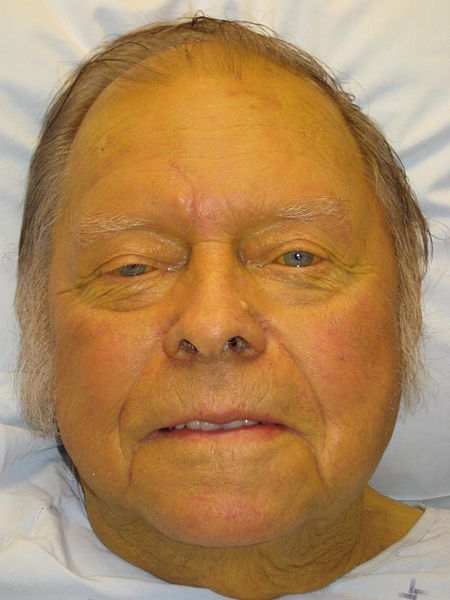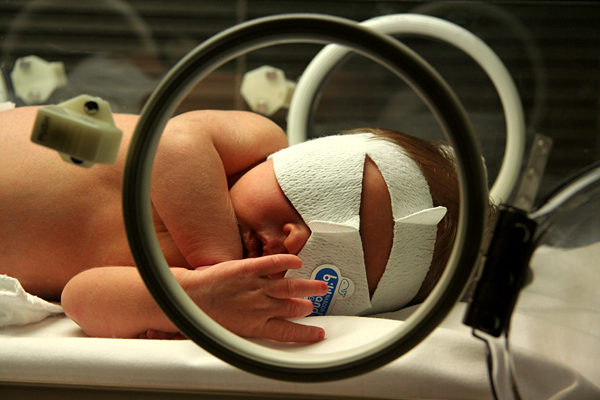Difference Between Icterus and Jaundice
Key Difference – Icterus vs Jaundice
Jaundice is the yellowish discoloration of mucosal layers of the body. The skin and whites of the eyes become yellowish in this condition. This is caused by increased amounts of bilirubin in the blood. Jaundice is often a sign of an underlying disease process. Although some people assume that icterus and jaundice are two different disease conditions with similar symptoms, icterus is only another name given to jaundice. Therefore, there is no difference between icterus and jaundice.
CONTENTS
1. Overview and Key Difference
2. What is Jaundice
3. What is Icterus
4. Side by Side Comparison – Icterus vs Jaundice in Tabular Form
5. Summary
What is Jaundice?
Jaundice is the yellowish discoloration of the mucosal layers of the body. This discoloration is caused by the accumulation of bilirubin. During the hemolysis of red blood cells, hemoglobin is broken down into haem and globin components. Haem is converted into biliverdin by the action of haem oxygenase, and it is then converted into unconjugated bilirubin. Unconjugated bilirubin is transported into the liver via blood by binding to albumin due to its low water solubility. After entering the liver, unconjugated bilirubin is converted into conjugated bilirubin by attaching a water-soluble molecule to it. Then, bilirubin is released into the gut, and the normal flora acts on it to produce stercobilinogen, which later becomes stercobilin. Some part of it is excreted via the kidney as urobilin.

Jaundice is categorized into two main subcategories as physiological jaundice and pathological jaundice.
Jaundice can appear in a healthy newborn due to increased hemolysis and the immaturity of the liver to rapidly metabolize the bilirubin produced during the process. This is known as physiological jaundice. Physiological jaundice usually appears 2-3 days after birth and gradually reaches a peak by one week. It can continue for about 14 days before spontaneously disappearing. Since this is not a disease condition, there is no need for investigations. Phototherapy is sometimes carried out to accelerate the breakdown of bilirubin.

Causes
Prehepatic Jaundice
- Hemolytic anemias and other red cell diseases
- Hemoglobinopathies
Posthepatic Jaundice
- Obstruction of the hepatobiliary system
- Damages to the hepatic parenchyma as in cirrhosis
Hepatic Jaundice
- Infections such as hepatitis B
- Adverse effects of drugs
Investigations
Biochemical studies should be carried out to measure the levels of total bilirubin, indirect and direct bilirubin. Clinicians may go for other appropriate investigations depending on the suspected underlying cause.
Treatment
Management of jaundice varies according to the underlying pathology that gives rise to this condition. Once the cause has been aptly treated and eliminated, jaundice will disappear spontaneously.
What is Icterus?
Icterus is a synonym of jaundice, which is the yellowish discoloration of mucosal layers of the body. There is no difference between icterus and jaundice.
What is the Difference Between Icterus and Jaundice?
- Icterus is another name given to jaundice. Therefore, there is no difference between the two words.
Summary – Icterus vs Jaundice
Icterus and jaundice are synonyms that are used to describe the rising levels of conjugated or unconjugated bilirubin in the body giving a yellowish tinge to the mucosal layers of the body. Thus, there is no difference between icterus and jaundice.
Download PDF Version of Icterus vs Jaundice
You can download PDF version of this article and use it for offline purposes as per citation note. Please download PDF version here Difference Between Icterus and Jaundice
Reference:
1.Hall, John E., and Arthur C. Guyton. Guyton and Hall textbook of medical physiology. 12th ed. Philadelphia, PA: Elsevier, 2016. Print
2.Kumar, Parveen J., and Michael L. Clark. Kumar & Clark clinical medicine. Edinburgh: W.B. Saunders, 2009.
Image Courtesy:
1. “Jaundice08” By James Heilman, MD – Own work (CC BY 3.0) via Commons Wikimedia
2. “Jaundice phototherapy” By Martin Pot (Martybugs at en.wikipedia) (CC BY 3.0) via Commons Wikimedia
ncG1vNJzZmivp6x7pbXFn5yrnZ6YsqOx07CcnqZemLyue8OinZ%2Bdopq7pLGMm5ytr5Wau261wq2cq62jYq6vsIyvqmaikaq7pbXCnmY%3D